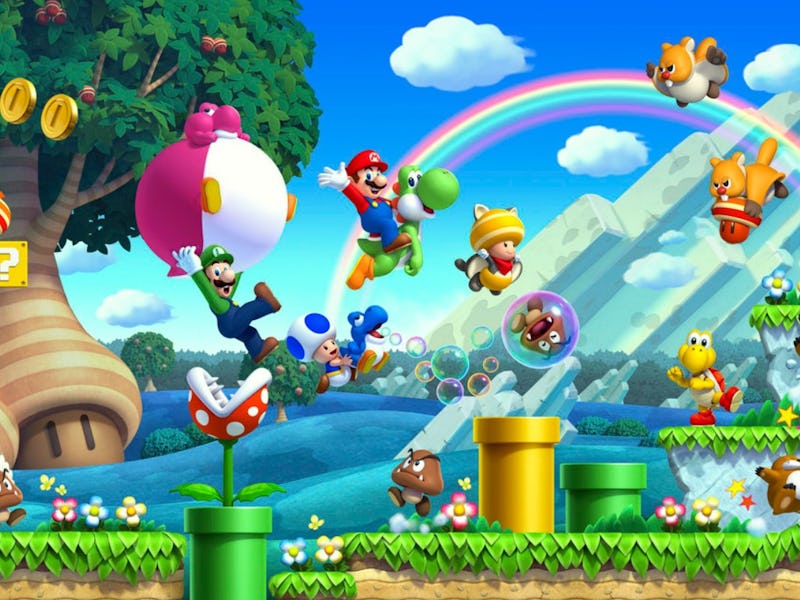10 Years Ago, the Most Overlooked Mario Game Revived a Classic Genre
If it ain’t broke, don’t fix it.

Sometimes, you don’t have to do something new, you just have to do something well. When it comes to video games, especially long-running series, the ability to perfect a core idea and keep running with what you have is better than trying and failing to innovate. For Mario, Nintendo’s plumber who has been around since 1981 and starred in Super Mario Bros. in 1985, the core experience of platforming across levels is as tried-and-true as it gets.
The upcoming Super Mario Bros. Wonder continues that trend while mixing things up just enough. But in 2012, the last 2D Mario game succeeded by adhering to the classic formula. A decade later, New Super Mario Bros U feels timeless.
New Super Mario Bros. U is classic Mario, and that's a good thing.
New Super Mario Bros. U is the result of countless iterations on the same theme. As the 17th mainline Mario game since 1983 and the fourth title in the New Super Mario Bros. series that revived the 2D platformers starting in 2006, the Wii U entry was already working with a practically perfect formula.
The design of New Super Mario Bros. U is more of an amalgamation of past games with slight tweaks. Power-ups like the Ice Flower and Yoshis return in their traditional forms, while others like the mini-mushroom appear slightly changed. The game’s only unique power-up is the Super Acorn, which itself is an imitation of the tanuki leaf that gives Mario the ability to fly.
That doesn’t mean that New Super Mario Bros. U is boring. Instead, it felt, in many ways, like 2D Mario games finally got their groove back after the long drought before the first New Super Mario Bros. game. The fluidity of platforming was part of this, but so was the game’s level design. New Super Mario Bros. U features challenging yet fun platforming levels that still hold up today.
Bonus content like New Super Luigi U made New Super Mario Bros. U special.
Perhaps the most unique aspect of New Super Mario Bros. U was in how players could interact with the game, rather than the mechanics of the game itself. As a launch title for the doomed Wii U, much of the game’s multiplayer capability relied on the console’s GamePad. Boost Mode was specifically designed with the hardware in mind, as it allowed a second player to interact with courses while the main player platformed as expected. The second player could help the main one by placing blocks that could be stepped on or used to stun enemies in Mario's path.
The 2013 DLC New Super Luigi U, brought on by the Year of Luigi, recycled the base game’s assets and replaced Mario with his brother as the main protagonist of the game. New Super Luigi U acted as a sort of hard mode for the game, as the levels were redesigned to be more challenging.
For many fans of the classic 2D Mario games, New Super Mario Bros. U is still a worthwhile game. It doesn’t reinvent the wheel, but it doesn’t have to.